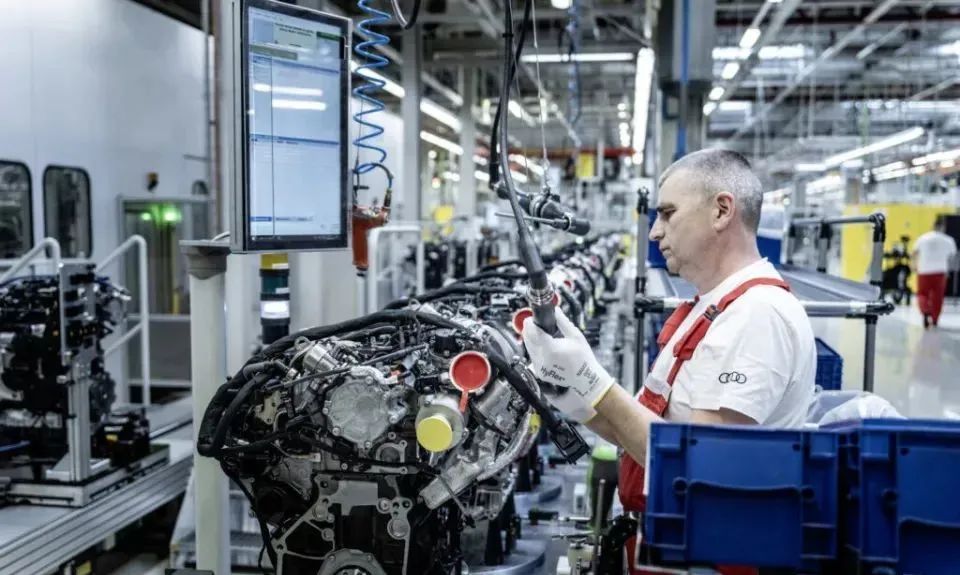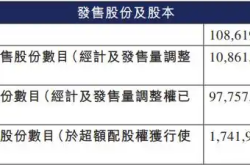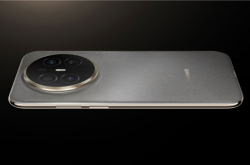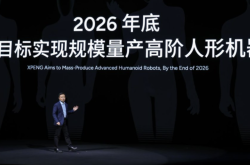Audi Revises Electrification Strategy, Joining BBA in Adaptation
![]() 06/24 2025
06/24 2025
![]() 584
584


Source: Auto Intelligence
On June 18, Audi officially issued a "Responsive Statement on Audi's Electrification Strategy." In the statement, Audi emphasized, "We remain steadfast in our belief in the future of electric mobility and are committed to achieving a fully electric product line-up in the long term. However, we have observed significant variations in the development of global markets. For instance, North America's 'inflection point' for electrification is shifting later, whereas China reached its 'inflection point' for the new energy vehicle market (including hybrids, extended-range vehicles, and pure electric vehicles) last year. This market volatility and diversity necessitate a flexible and stable product mix over the coming years, encompassing battery electric vehicles (BEVs), plug-in hybrid vehicles (PHEVs), and internal combustion engine (ICE) vehicles."
According to its initial ambitious plan, Audi intended to phase out fuel vehicles globally by 2026 and achieve full electrification by 2033. This statement signifies that Audi has officially abandoned its 2033 full electrification target, making it the third luxury automaker among BBA (Benz, BMW, Audi) to significantly adjust its electrification strategy, following Mercedes-Benz and BMW.
In an interview with foreign media, Audi CEO Markus Duesmann reiterated Audi's strategic objectives, abandoning the previous plan to cease fuel vehicle production by 2033 and fully transition to electrification. Instead, Audi will continue to develop gasoline, hybrid, and electric vehicles over the next 7-10 years.
Duesmann further revealed that Audi will spearhead the development of platform architecture and software systems for Volkswagen Group's medium and large vehicles, encompassing all models from the A5 level upwards. This includes the next-generation SSP platform, marking the Volkswagen Group's first full transition to "software-defined vehicles." This project is a collaboration between Volkswagen and Rivian, with the first Audi models equipped with the SSP platform expected to launch by the end of 2027 or in 2028.

Audi's Electrification Adjustments
Audi once had grand ambitions for electrification. In June 2021, Audi announced an accelerated electrification roadmap, planning to introduce only BEVs globally from 2026, gradually phasing out ICE models by 2033, with the ultimate goal of achieving zero emissions by 2050. This aggressive strategy briefly positioned Audi as a "pioneer" in the electrification transformation of traditional automakers. However, reality dealt a significant blow.
Sales-wise, 2024 was a challenging year for Audi. Globally, sales declined by 11.8%, ending the year at 1.67 million units. Deliveries in Europe and the United States, its two major markets, fell by 11.1% and 14%, respectively. The Chinese market also suffered, with a 10.9% year-on-year decline to 650,000 units, further widening the gap with BMW and Mercedes-Benz to over 100,000 units.
In terms of electrified models, Audi's performance was even more disappointing. In 2024, pure electric vehicle deliveries totaled only 164,000 units, accounting for less than 10% of total sales and declining by 8% year-on-year.
Profit margins were also under immense pressure. In 2024, Audi's operating profit plummeted by 45.3%, with the operating profit margin dropping to a historic low of 4.6%. In the first quarter of 2025, Audi's brand profit margin stood at only 1.5%, significantly below the Group's overall level of 3.5%. With losses in all three major global markets, Audi's electrification transformation hit a roadblock.
Several factors contributed to Audi's electrification setbacks. Software development difficulties were a primary challenge, with the delayed development of CARIAD, Volkswagen Group's software company, severely hindering the launch of Audi's PPE platform models. The Q6e-tron, originally scheduled for delivery in 2024, was delayed by 18 months due to software issues and performed poorly post-launch, with only 15,000 units delivered in 2024, accounting for less than 10% of pure electric vehicle deliveries.
Additionally, during the electrification transformation, Audi's product planning deviated from market demand. For example, in the Chinese market, the Q5e-tron and Q4e-tron launched for the global market failed to fully consider the unique needs of Chinese consumers, lacking competitiveness compared to local new energy automakers.
In fact, Audi's predicament is not unique. As representatives in the luxury vehicle segment, BBA have all encountered similar challenges in their electrification transformation.
In the era of fuel vehicles, BBA relied on their strong luxury brand attributes to easily command higher brand premiums, with consumers willing to pay for their brand value.
However, in the electric market, the market environment has drastically changed. Consumers' purchasing decisions are no longer solely based on the brand but are influenced by factors such as technical performance, intelligence levels, and usage costs. In these areas, emerging automakers like BYD and Tesla have leveraged technological innovation and rapid iteration to introduce more competitive products. Conversely, BBA's electrified models have struggled to meet consumers' increasingly diverse needs due to issues like lagging technology development and unclear product positioning, ultimately leading to consumer dissatisfaction.
This has prompted BBA to reconsider its electrification strategy and adjust its product layout to adapt to new market dynamics.

Collective Shift Among BBA
Luxury Car Market Undergoes Sudden Changes
Audi's significant shift in electrification strategy is not an isolated incident but rather a microcosm of the collective strategic adjustments among luxury automakers. This market-driven strategic transformation is reshaping the competitive landscape of the global luxury car market.
In March 2024, Mercedes-Benz announced that it no longer plans to fully transition to electric vehicle sales in major markets by 2030. Ola Kaellenius, CEO of Mercedes-Benz, stated that the company is prepared to continue producing ICE vehicles and plans to update technology over the next decade. It also aims to launch a new line-up of ICE models by 2027, ensuring ICE vehicles persist into the 2030s.
In September of the same year, Volvo Cars also announced adjustments to its long-term electrification strategy, officially abandoning its original goal of achieving 100% sales of pure electric vehicles by 2030, opting instead for a more flexible and diversified electrification path.
BMW Group has also taken action. In August 2024, BMW Group Chairman Oliver Zipse remarked during a financial report conference call that BMW hopes to swiftly adapt based on customer preferences and regional differences. This statement hinted at BMW's flexibility in its electrification strategy.
Behind BBA's collective shift lies the complexity and uncertainty of the global automotive market's electrification process. Firstly, there are marked differences in the pace of electrification development across regional markets. Apart from the shifting 'inflection point' for North American electrification, the European market saw a 5.9% year-on-year decline in electric vehicle sales in 2024, with a severe market contraction following Germany's abolition of vehicle purchase subsidies. Conversely, China's new energy vehicle penetration rate reached 47.6% in 2024, exceeding 50% alone in May 2025. Secondly, issues such as inadequate charging infrastructure, range anxiety, and high vehicle purchase costs persist globally, continually dampening consumer enthusiasm for new energy vehicles.
Against this backdrop, BBA's strategic shift is not merely a passive response to market realities but an active adaptation to industry development trends. By diversifying powertrain layouts, BBA provides consumers with product choices that better align with their needs, while also gaining buffer time for technological iteration and market cultivation.

At the Crossroads of Electrification Transformation:
Challenges and Opportunities Coexist
Compared to the nimble transformation models of new entrants or pure electric brands, BBA carries heavier historical burdens and broader market layouts, directly impacting the pace of their electrification strategies. From the substantial investment in ICE assets to the contrasting market situations globally, to the yet-to-be-proven electric vehicle profit model, every step of BBA's transformation is akin to walking a tightrope.
Double Shackles of Sunk Costs and Organizational Restructuring
The technological heritage accumulated by Mercedes-Benz, BMW, and Audi in the era of fuel vehicles has now become a significant burden for their electrification transformation. Completely abandoning these technologies would entail sunk costs of tens of billions of euros, pressure to rebuild supply chains, and the need to reconstruct numerous factory equipment and human resources. For BBA, this is not just a technology path choice but the cost of an organizational system's "self-denial".
Data shows that BBA has cumulatively invested over 80 billion euros in engine research and development. The BMW inline six-cylinder engine family alone has spawned 47 models, covering the full power range from 1.5T to 4.4T. Abandoning ICE technology would not only necessitate reconstructing the supply chain system (e.g., Bosch engine management systems and Continental fuel injection components) but would also lead to capacity idleness at 12 engine factories in Germany, involving job adjustments for 37,000 industrial workers. For BBA, the electrification transformation transcends a simple technological choice, evolving into an organizational system-wide "self-denial" affecting every aspect.
Thus, this transformational pain forces them to adopt a "dual-track advancement" strategy—retaining the profitability of strong ICE models while gradually investing in new electric vehicle model growth points. This "two-front battle" pattern essentially serves as a risk hedge.
Strategic Compromise Under Diversified Demands
More complexly, BBA's markets extend beyond China and Europe, where electrification is progressing rapidly, to regions at different stages of development such as North America, the Middle East, Southeast Asia, and Africa. In these regions, electrification infrastructure is immature, policy guidance is unclear, oil prices are relatively stable, and ICE vehicles remain the mainstream of consumption.
For instance, in BMW's 2024 sales in South Africa, India, and Southeast Asia, ICE models still accounted for over 90%. Mercedes-Benz also heavily relies on fuel vehicle models in Brazil and the Middle East markets. Audi's electric vehicle sales in the US market represent only about 10% of its overall sales. Such significant structural differences dictate that BBA cannot abandon fuel vehicles in a one-size-fits-all manner. Forcing full electrification would be akin to cutting off their own lifeline.
Double Squeeze of Cost Dilemma and Market Competition
Beyond technology and market dynamics, the yet-to-be-proven electric vehicle profit model poses the biggest obstacle on BBA's transformation path.
To date, the gross profit margins of most BBA electric vehicle models are still lower than those of their ICE counterparts in the same segment, particularly for mid-to-high-end models. Taking Audi as an example, the Q4e-tron's gross profit margin is 12 percentage points lower than that of the fuel vehicle Q5 on the same platform. Meanwhile, the terminal discount rate of the Mercedes-Benz EQS in the Chinese market has reached 40%, with inventory turnover days exceeding 120 days. In contrast, BYD Tang DM-i achieves a gross profit margin of 25% with its plug-in hybrid technology, while the Tesla Model Y rear-wheel-drive version consistently maintains a gross profit margin above 20%.
The cost gap primarily stems from the three-electric system: BBA's battery procurement costs are 15%-20% higher than those of automakers supplied directly by CATL, while the integration level of the electric drive system (e.g., motor power density) is 8-10 percentage points lower than that of BYD and Tesla. In its statement, Audi implicitly mentioned that it would "deepen technical cooperation with CATL and Horizon Robotics," and industry speculation suggests it may introduce CTP (cell-to-pack integration technology) and domain controller integration solutions to reduce the cost of the electric drive system.
Concurrently, compared to Chinese autonomous brands continuously exploring lower price ranges and offering high cost-effectiveness, BBA has always lacked killer products in the electric market. While brand power remains strong, consumer acceptance of electric products hinges more on performance, range, smart experience, and price, rather than the traditional brand aura.
BBA must rely on the stable cash flow from its ICE vehicle business to provide continuous financial support for its electrification transformation. This is a crucial reason why they choose to extend the lifecycle of fuel products and slow down the pace of electrification.

Conclusion:
Diversification and Differentiation: The New Paradigm
Amidst the rapid transformation towards electrification and intelligence in the automotive sector, BBA's strategic shifts are not merely reactive to market pressures; they embody the inherent logic of profound synergy between these two trends. Henrik Wenders, Audi's Head of Technology Development, emphasized in an internal meeting, "Advanced autonomous driving capabilities are emerging as the cornerstone of electric vehicle models. For every 10% uptick in the adoption of L2 and above intelligent driving systems, the premium attributes of electric vehicles can be bolstered by 5%-8%."
Unlike emerging automakers solely focused on electrification, BBA leverages autonomous driving technology as the "pivot of differentiation" within its electrification strategy. Mercedes-Benz, at the 2024 Munich Auto Show, unveiled the MB.OS system, which seamlessly integrates electric drive control with autonomous driving decision-making, achieving a holistic optimization of "energy-path-driving." BMW's Neue Klasse platform, on the other hand, adopts a centralized computing unit architecture, boosting the iteration speed of intelligent driving functions for electric vehicles by 50%.
Audi's approach is more tailored to specific scenarios: For high-end Chinese consumers, it introduced the "Executive Cabin Intelligent Driving Package" to the 2025 e-tron family, encompassing rear touchscreen control for autonomous driving and valet parking memory functions. This optional package commands a premium of 38,000 yuan per vehicle, yet incurs an additional cost of only 12,000 yuan, making it the most lucrative configuration option among electric vehicle models.
BBA's collective pivot underscores a pivotal truth in the automotive industry's transformation: In the dual shift towards autonomous driving and energy transition, there is no "one-size-fits-all" optimal solution. For traditional luxury brands, striking a dynamic balance between the "legacy value" of internal combustion engine technology (such as brand tone and mechanical performance reputation) and the "future value" of electrification is crucial. In terms of powertrains, pure electric, plug-in hybrid, and internal combustion engines will coexist for the foreseeable future, with automakers flexibly adjusting their product mix to cater to varying market needs.
Audi's decision to forgo the "pure electric radicalism" path was essentially a rational adjustment of the pace of change within the traditional automotive industry. With the accelerated penetration of autonomous driving technology, electrification has transcended being a mere replacement of power and evolved into a systematic reimagining of "energy-intelligence-experience." For BBA, retaining the internal combustion engine option is not a step backward but a strategic move to buy time for technological iterations in the full-scale implementation of intelligent electrification—as echoed in Audi's announcement: 'True transformation is not about superficial speed but about respecting the laws of the industry.'
This strategic realignment prompts reflection: As new players disrupt the market with "all-in electrification," traditional giants employ the "precise stratification" strategy, proving that in the lengthy cycle of technological revolution, understanding 'when to persist' and 'when to adapt' may embody a more advanced business acumen. Autonomous driving technology is emerging as a pivotal lever in balancing present realities with future aspirations, with its progress directly influencing the ultimate form of the electrification transformation.
It is foreseeable that, fueled by electrification, intelligence, and networking, the automotive industry stands on the cusp of even more thrilling changes and advancements.
Disclaimer:
All works marked with 'Source: XXX (non-ZhiChe Technology)' on this official account are reprinted from other media. The purpose of reprinting is to disseminate and share more information and does not imply the platform's endorsement of the views expressed or responsibility for their authenticity. The copyright belongs to the original author. Should there be any infringement, please contact us for prompt removal.








